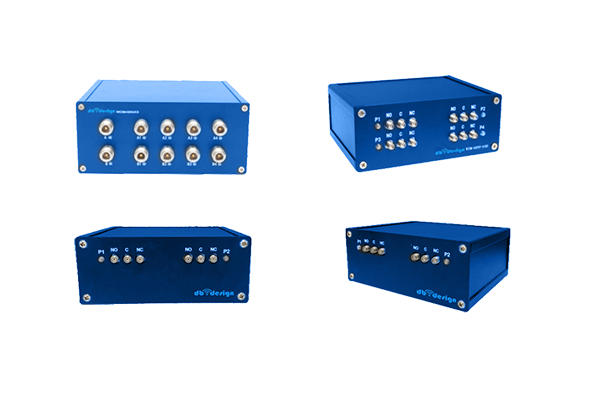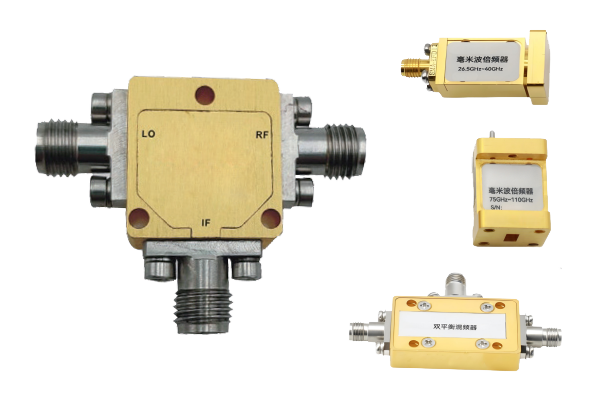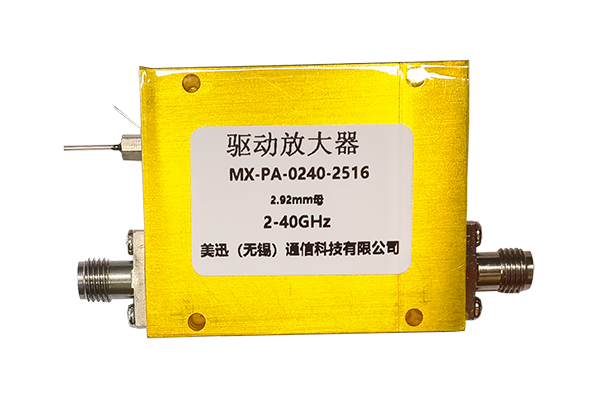
Pin diode devices are now regarded as essential parts in high-frequency circuitry given their inherent performance characteristics Their prompt switching characteristics combined with low capacitance and small insertion loss enable efficient use in switching modulation and attenuation scenarios. The main mechanism of PIN diode switching uses bias voltages to regulate copyright flow through the device. The control voltage varies the depletion region dimensions at the junction and thereby alters conductive behavior. Bias adjustment yields effective PIN diode switching suitable for high-frequency use with limited distortion
Precise timing and control requirements often lead to the integration of PIN diodes into intricate circuit designs They are implemented in RF filtering schemes to enable selective frequency band passage or blockage. Their high-power endurance makes them appropriate for amplifier power dividing and signal generation functions. Advances producing smaller and efficient PIN diodes have widened their roles in modern wireless and radar applications
Coaxial Switch Design and Performance Analysis
Coaxial switch design is a sophisticated process involving many important design considerations A switch’s performance is determined by its type frequency range and how well insertion loss is controlled. Coaxial switch optimization emphasizes low insertion loss combined with high interport isolation
Assessment of switch performance typically measures metrics including return loss insertion loss and isolation. These values come from combined use of simulations theoretical predictions and experimental validation. Thorough analysis is critical for confirming reliable coaxial switch performance
- Simulation packages analytic approaches and lab experiments are commonly applied to analyze coaxial switch designs
- Temperature, mismatched impedances and manufacturing variances often have strong effects on switch performance
- Innovative trends and recent advances in switch design emphasize metric improvements while lowering size and consumption
LNA Design for Maximum Fidelity
Achieving high LNA performance efficiency and gain is critical for exceptional signal fidelity in many use cases Achieving results demands careful transistor picks optimized bias settings and considered topology design. Well engineered LNA circuits reduce noise influence and increase amplification while controlling distortion. Design evaluation relies heavily on simulation and modeling tools to measure noise effects of various choices. The goal is to minimize Noise Figure, reflecting the amplifier’s proficiency in maintaining signal relative to added noise
- Choosing active devices with low noise profiles is a key requirement
- Establishing proper bias conditions with optimal settings minimizes noise within transistors
- The overall noise outcome is greatly affected by the selected circuit topology
Implementing matching networks noise reduction strategies and feedback control enhances LNA outcomes
Signal Path Control Using Pin Diodes

PIN diode switches serve as practical and efficient solutions for directing RF signals in many systems Fast state changes in these devices permit agile dynamic routing of RF signals. A major advantage of PIN diodes is low insertion loss and high isolation which reduces signal degradation. They are commonly used in antenna selection duplexers and phased array RF antennas
A PIN diode switch’s operation depends on modulating its electrical resistance with a control voltage. In the off deactivated or open state the diode presents a high resistance path blocking signal flow. A controlled forward voltage lowers resistance and enables unimpeded RF signal flow
- Furthermore PIN diode switches boast speedy switching low power consumption and small size
Various PIN diode network configurations and architectural designs can achieve advanced signal routing functions. Strategic interconnection of many switches yields configurable switching matrices for versatile path routing
Performance Efficacy Assessment of Coaxial Microwave Switches

Thorough assessment and testing of coaxial microwave switches are necessary to guarantee reliable system operation. Many various diverse factors determine the switches’ performance including insertion reflection transmission loss isolation switching speed and bandwidth. Comprehensive assessment includes testing these parameters under multiple operating environmental and test scenarios
- Additionally the evaluation should incorporate reliability robustness durability and capacity to handle severe environmental conditions
- The end result of a solid evaluation produces essential valuable and critical data to support selection design and improvement of switches for defined applications
Minimizing Noise in LNA Circuits A Comprehensive Review
LNA circuits play a crucial role in wireless radio frequency and RF systems by boosting weak inputs and restraining internal noise. The review provides a comprehensive examination analysis and overview of noise reduction techniques for LNAs. We explore investigate and discuss primary noise sources such as thermal shot and flicker noise. We also examine noise matching feedback circuitry and optimal biasing strategies to mitigate noise contributions. It presents recent developments like new semiconductor materials and fresh circuit architectures that lower noise figure. By elucidating noise reduction principles and applied practices the article aims to be a valuable resource for engineers and researchers building high performance RF systems
Applications of PIN Diodes for Fast Switching

PIN diodes have exceptional unique remarkable properties that suit high speed switching applications Low capacitance combined with low resistance produces rapid switching for applications requiring precise timing. In addition PIN diodes display linear voltage response that supports precise amplitude modulation and switching performance. Versatility flexibility and adaptability enable their suitable applicable and appropriate deployment in many high speed applications Use cases cover optical communications microwave circuitry and signal processing devices and equipment
Coaxial Switch Integration and IC Switching Technology
Integrated circuit coaxial switching technology brings enhanced capabilities for signal routing processing and handling within electronics systems circuits and devices. These specialized integrated circuits enable control management and routing of coaxial signals with high frequency performance and low latency insertion times. Miniaturization inherent in IC technology yields compact efficient reliable and robust designs suited for dense interfacing integration and connectivity requirements
- Through careful meticulous and rigorous implementation of these approaches engineers can achieve LNAs with exceptional noise performance supporting sensitive reliable systems Through careful meticulous and rigorous implementation of these approaches engineers can achieve LNAs coaxial switch with exceptional noise performance supporting sensitive reliable systems By carefully meticulously and rigorously applying these approaches designers can realize LNAs with outstanding noise performance enabling sensitive reliable electronic systems By meticulously carefully and rigorously adopting these practices designers can deliver LNAs with excellent noise performance supporting reliable sensitive systems
- Applications cover telecommunications data networking and wireless communication systems
- Integration of coaxial switch ICs serves aerospace defense and industrial automation industries
- Application examples include consumer electronics audio video products and test measurement systems
Low Noise Amplifier Design for mmWave Systems

LNA design at millimeter wave frequencies faces special challenges due to higher signal attenuation and amplified noise impacts. Parasitic capacitance and inductance play a dominant role at mmWave and necessitate precise layout and component choices. Reducing input mismatch and boosting power gain are critical essential and important for LNA functionality at mmWave. Selecting active devices like HEMTs GaAs MESFETs and InP HBTs greatly affects achievable noise figures at these frequencies. Moreover additionally moreover the design implementation and optimization of matching networks is vital to ensure efficient power transfer and impedance match. Attention to package parasitics is crucial as they have potential to harm mmWave LNA performance. Choosing low-loss interconnects and sound ground plane designs is essential necessary and important to minimize reflections and maintain high bandwidth
Characterization and Modeling of PIN Diodes for RF Switching
PIN diodes operate as essential components elements and parts in diverse RF switching applications. Detailed accurate and precise characterization of these devices is essential to design develop and optimize reliable high performance circuits. This requires analyzing evaluating and examining electrical properties including voltage current resistance impedance and conductance. Their frequency response bandwidth tuning capabilities and switching speed latency or response time are likewise measured
Additionally the development of accurate models simulations and representations for PIN diodes is vital essential and crucial for predicting their behavior in RF systems. A range of modeling approaches including lumped element distributed element and SPICE models are used. The choice of model simulation or representation hinges on the specific application requirements and the desired required expected accuracy
Sophisticated Advanced Methods for Minimal Noise Amplifiers
Developing LNAs involves diligent consideration of circuit topology and components to obtain optimal noise performance. Recent advances in semiconductor tech have unlocked innovative groundbreaking sophisticated LNA design techniques that diminish noise greatly.
Among several numerous numerous these techniques are employing utilizing implementing wideband matching networks incorporating low noise transistors with high intrinsic gain and optimizing biasing scheme strategy approach. Moreover advanced packaging techniques and effective thermal management significantly contribute to reducing external noise sources. With careful meticulous and rigorous execution of these strategies designers can obtain LNAs exhibiting excellent noise performance for sensitive reliable systems
